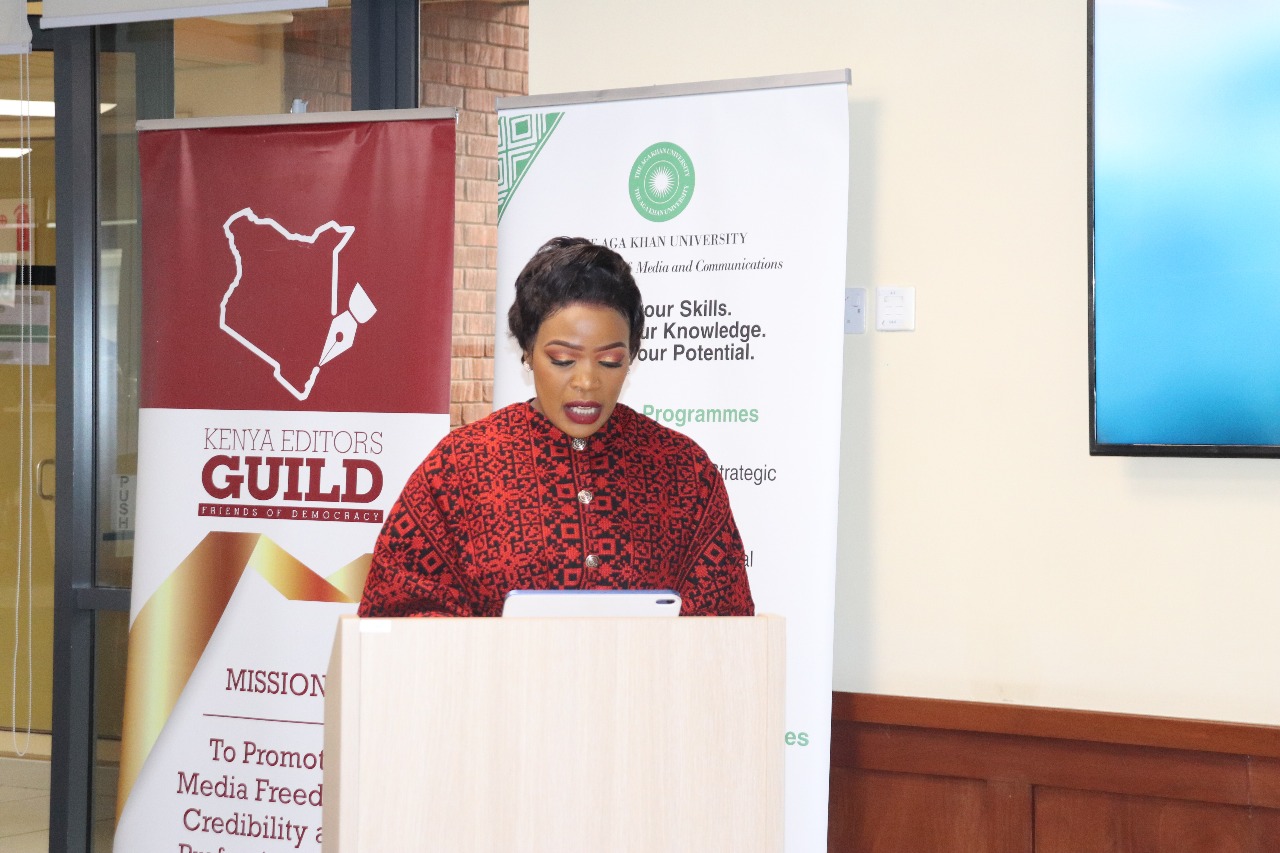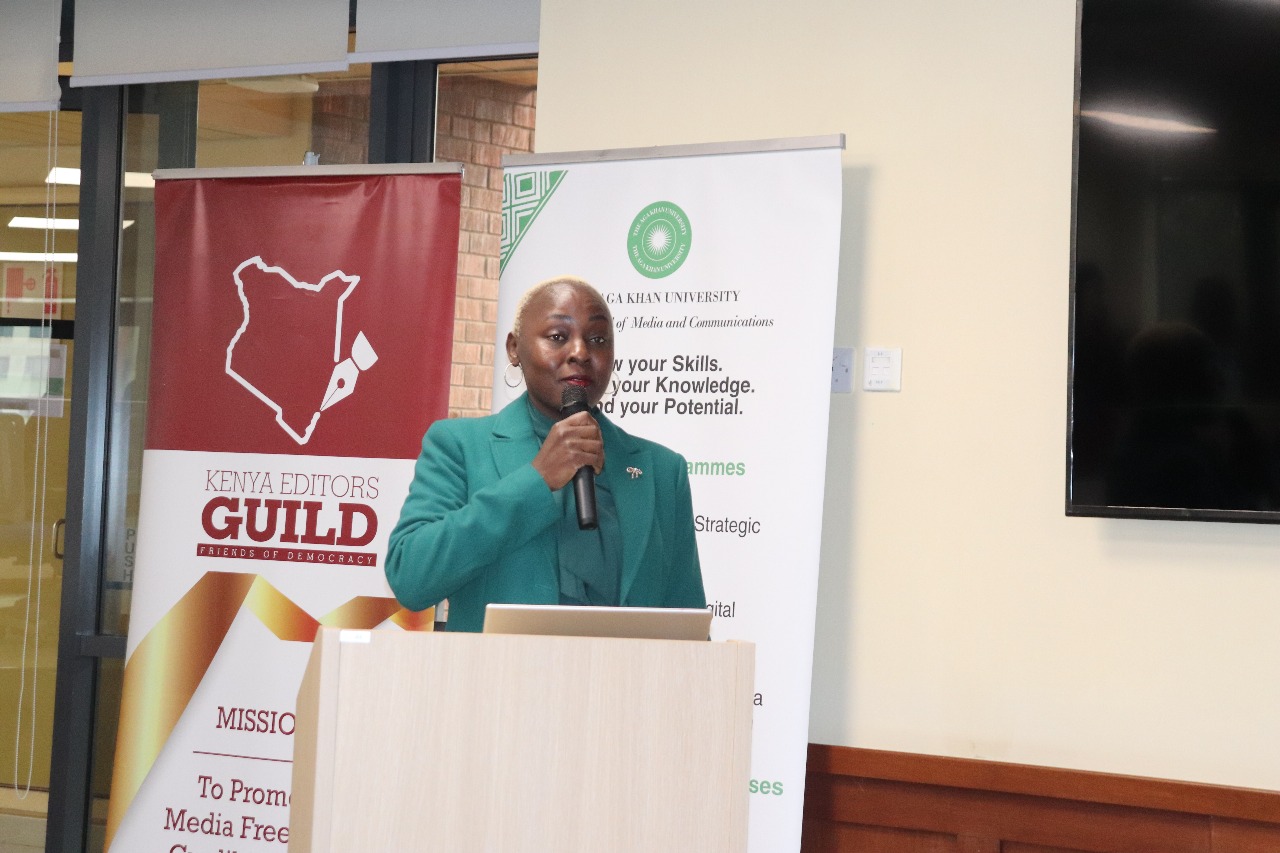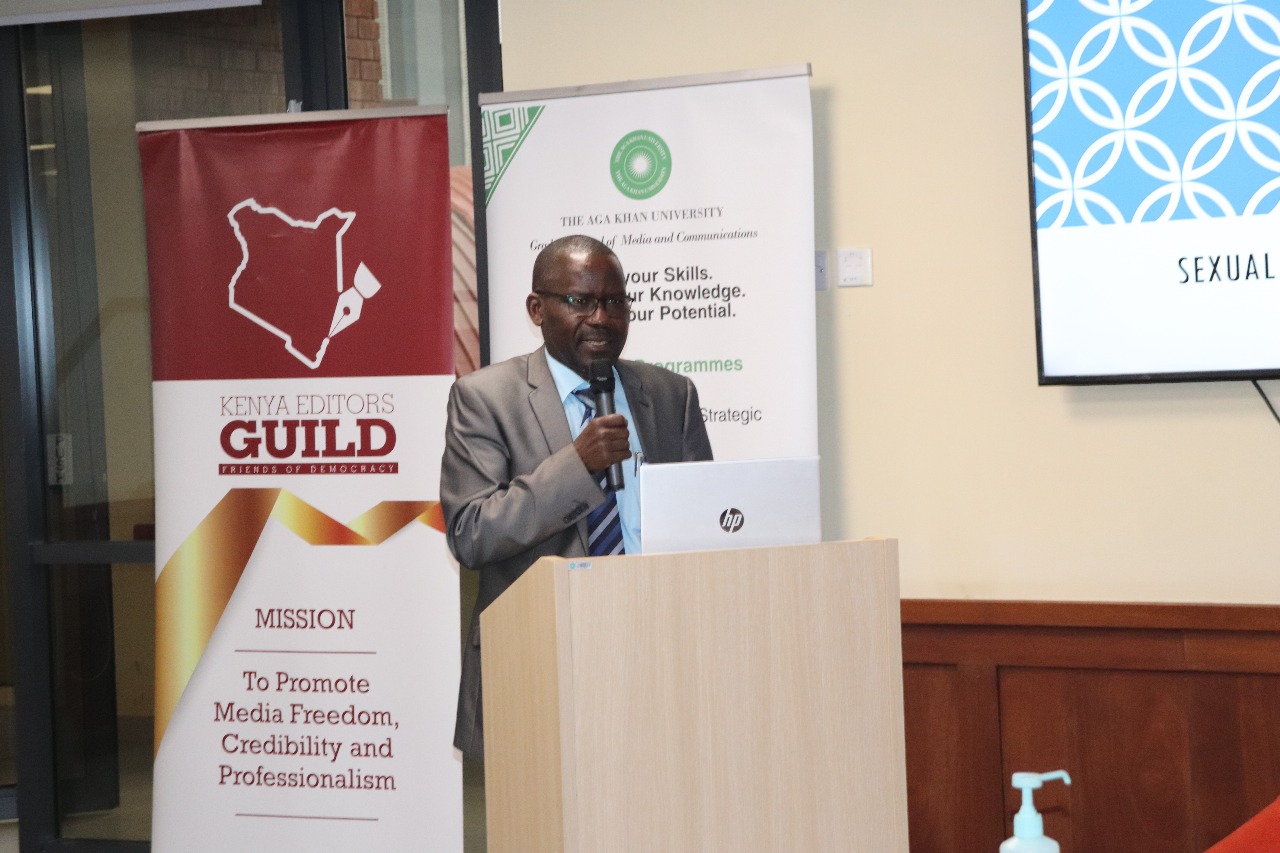 President of Kenya Editors Guild Zubeidah Kananu/JANET ANYANGO
President of Kenya Editors Guild Zubeidah Kananu/JANET ANYANGOMedia leaders, journalists, human rights advocates, and gender experts on Tuesday gathered at Aga Khan University to confront a persistent issue in the industry—sexual harassment in newsrooms.
The dialogue, organised by the Kenya Editors Guild, sought to promote media freedom, credibility and professionalism by addressing what participants described as one of the most damaging threats to the sector.
 Dr Radoli speaks during discussion of sexual harassment/JANET ANYANGO
Dr Radoli speaks during discussion of sexual harassment/JANET ANYANGOSpeakers pointed to a lack of women in leadership, ignorance of existing media policies, and the normalization of inappropriate behavior as major contributors to the problem.
“Some organizations either have weak policies or no proper enforcement. In fact, 64 percent of policies don’t work in many organizations,” noted Dr. Radoli during the discussion.
The Association of Media Women in Kenya (AMWIK) shared findings from its research, which paint a grim picture.
Executive Director Queenter Mbori revealed that a 2021 study showed 79 percent of female journalists in Kenya had experienced sexual harassment—the highest percentage reported in Africa.
“The board management must support stronger house policies. Women and men in the industry must speak up,” Mbori urged.
A 2023 AMWIK report found that interns and young journalists, aged 18 to 35, are the most vulnerable, with 60 percent reporting harassment. Yet 69 percent of them were unaware of the policies in their own media houses. Despite 70 per cent knowing their perpetrators, most remain silent out of guilt or fear.
The report also revealed troubling attitudes within the industry. Half of the male respondents blamed harassment on women’s behavior or dressing.
A 2025 audit highlighted weak reporting mechanisms, inconsistent management, and the fact that 80 per cent of survivors never come forward.
 Executive Director, AMWIK Queenter Mboori/JANET ANYANGO
Executive Director, AMWIK Queenter Mboori/JANET ANYANGOKenya Editors Guild president Zubeidah Kananu said the figures mirror a worrying trend.
“Recent surveys show 60 percent of journalists have faced sexual harassment, with women disproportionately affected. Perpetrators often go unpunished,” she said.
The culture of impunity was echoed in testimonies that abusers often move from one newsroom to another without accountability.
About 70 per cent of journalists admitted they knew at least one perpetrator who faced no consequences, even after cases were reported to human resource managers.
 Dr Julius Bosire, lecturer at the Technical University of Kenya./JANET ANYANGO
Dr Julius Bosire, lecturer at the Technical University of Kenya./JANET ANYANGOTechnical University of Kenya lecturer Dr. Julius Bosire called for a unified media code against harassment, tied to licensing requirements.
“Sexual harassment is an ethical issue,” he emphasized, urging media houses to adopt comprehensive frameworks that include planning, implementation and monitoring.
In closing, speakers agreed that media houses must establish effective systems, train young journalists on their rights, and build coalitions to combat violence and harassment.
They stressed that dressing or personal behavior should never be used as an excuse for abuse.











